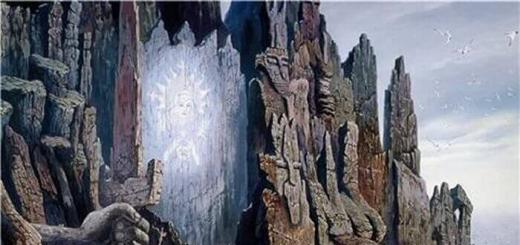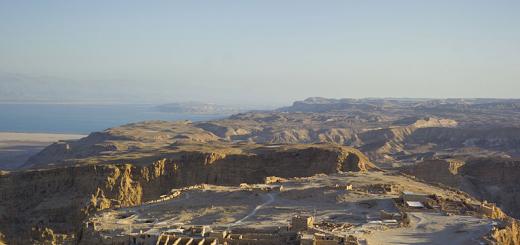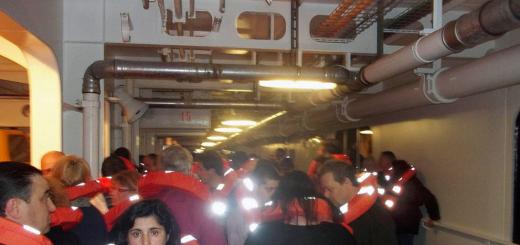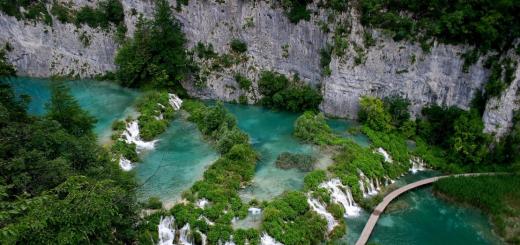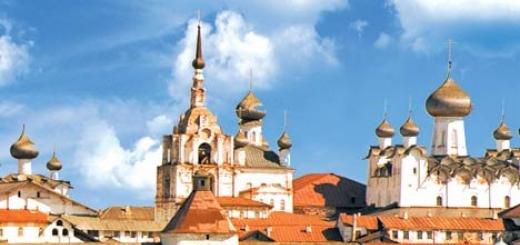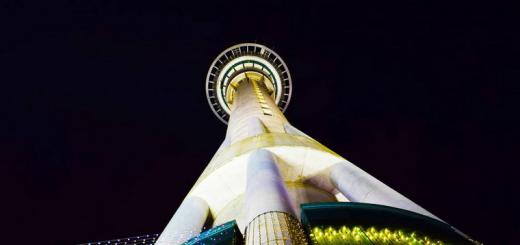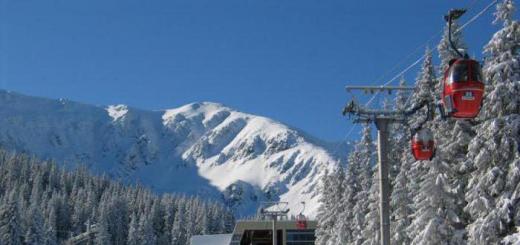Publications of the section Architecture
Where did the Romanovs live
Little Imperial, Mramorny, Nikolaevsky, Anichkov - we go for a walk along the central streets of St. Petersburg and remember the palaces in which representatives of the royal family lived.
Palace Embankment, 26
Let's start our walk from the Palace Embankment. Several hundred meters east of the Winter Palace is the palace of the Grand Duke Vladimir Alexandrovich, the son of Alexander II. Previously, the building built in 1870 was called "the small imperial court". All interiors have been preserved here almost in their original form, reminiscent of one of the main centers of the social life of St. Petersburg at the end of the 19th century. Once upon a time, the walls of the palace were decorated with many famous paintings: for example, on the wall of the former billiard room hung "Barge Haulers on the Volga" by Ilya Repin. Monograms with the letter "V" - "Vladimir" have been preserved on the doors and panels.
In 1920, the palace became the House of Scientists, and today the building houses one of the main scientific centers of the city. The palace is open to tourists.
Palace Embankment, 18
A little further on the Palace Embankment, you can see the majestic gray Novo-Mikhailovsky Palace. It was erected in 1862 by the famous architect Andrei Shtakenshneider for the wedding of the son of Nicholas I - Grand Duke Mikhail Nikolaevich. New palace, for the reconstruction of which the neighboring houses were bought out, has absorbed the Baroque and Rococo styles, elements of the Renaissance and architecture of the times of Louis XIV. Before the October Revolution, there was a church on the top floor of the main façade.
Today, the palace houses the institutions of the Russian Academy of Sciences.
Millionnaya Street, 5/1
Further on the embankment is the Marble Palace, the ancestral home of the Konstantinovichs - the son of Nicholas I, Constantine, and his descendants. It was built in 1785 by the Italian architect Antonio Rinaldi. The palace became the first building in St. Petersburg to be faced with natural stone. At the turn of the 19th and 20th centuries, the Grand Duke Konstantin Konstantinovich lived here with his family, known for his poetic works, in the pre-revolutionary years - his eldest son John. The second son - Gabriel - wrote his memoirs "In the Marble Palace" in exile.
In 1992, the building was transferred to the Russian Museum.
Admiralteyskaya embankment, 8
Palace of Mikhail Mikhailovich. Architect Maximilian Mesmacher. 1885-1891. Photo: Valentina Kachalova / Lori Photo Bank
Close to Winter Palace on the Admiralteyskaya embankment you can see a building in the neo-Renaissance style. Once it belonged to the Grand Duke Mikhail Mikhailovich, the grandson of Nicholas I. It began to be built when the Grand Duke decided to marry - the granddaughter of Alexander Pushkin, Sophia Merenberg, became his chosen one. Emperor Alexander III did not give his consent to marry, and the marriage was recognized as morganatic: Mikhail Mikhailovich's wife did not become a member of the imperial family. The Grand Duke was forced to leave the country without ever living in the new palace.
Today the palace is leased to financial companies.
Labor Square, 4
If you walk from the Mikhail Mikhailovich Palace to the Blagoveshchensky Bridge and turn left, on Labor Square we will see another brainchild of the architect Stakenschneider - the Nikolaevsky Palace. Until 1894, the son of Nicholas I, Nikolai Nikolaevich the Elder, lived there. During the years of his life, the building also housed a house church; everyone was allowed to attend services here. In 1895, after the death of the owner, a women's institute named after Grand Duchess Xenia, sister of Nicholas II, was opened in the palace. The girls were taught the professions of an accountant, housekeeper, and seamstress.
Today, excursions, lectures and folklore concerts are held in the building known in the USSR as the Palace of Labor.
English Embankment, 68
Let's return to the embankment and head west. Halfway to the Novo-Admiralty Canal is the palace of Grand Duke Pavel Alexandrovich, son of Alexander II. In 1887, he bought it from the daughter of the late Baron Stieglitz, a famous banker and philanthropist, whose name the Academy of Arts founded by him bears. The Grand Duke lived in the palace until his death - he was shot in 1918.
The palace of Pavel Alexandrovich was empty for a long time. In 2011, the building was transferred to St. Petersburg University.
Moika River Embankment, 106
On the right side of the Moika River, opposite New Holland Island, is the palace of the Grand Duchess Xenia Alexandrovna. She was married to the founder of the Russian air force, Grand Duke Alexander Mikhailovich, grandson of Nicholas I. The palace was presented to them for a wedding - in 1894. During the First World War, the Grand Duchess opened a hospital here.
Today the palace houses the Lesgaft Academy of Physical Culture.
Nevsky prospect, 39
We leave on Nevsky Prospekt and move in the direction of the Fontanka River. Here, at the embankment, the Anichkov Palace is located. It was named so after the Anichkov bridge in honor of the ancient family of columnar nobles Anichkov. The palace, erected during the reign of Elizaveta Petrovna, is the oldest building on Nevsky Prospekt. Architects Mikhail Zemtsov and Bartolomeo Rastrelli took part in its construction. Later, Empress Catherine II donated the building to Grigory Potemkin. On behalf of the new owner, the architect Giacomo Quarenghi gave Anichkov a more austere, close to modern look.
Starting with Nicholas I, the heirs to the throne lived in the palace. When Alexander II ascended the throne, the widow of Nicholas I Alexandra Feodorovna lived here. After the death of Emperor Alexander III, the Dowager Empress Maria Feodorovna settled in the Anichkov Palace. Nicholas II also grew up here. He did not like Winter Palace and spent most of his time, already being emperor, in the Anichkov Palace.
Today it houses the Palace of Youth Creativity. The building is also open to tourists.
Nevsky prospect, 41
On the other side of the Fontanka is the Beloselsky-Belozersky Palace - the last private house built on the Nevsky in the 19th century and another brainchild of Stakenschneider. At the end of the 19th century, it was bought by Grand Duke Sergei Alexandrovich, and in 1911 the palace passed to his nephew, Grand Duke Dmitry Pavlovich. He sold the palace in 1917, being in exile for participating in the murder of Grigory Rasputin. And later he emigrated and took out the money from the sale of the palace abroad, thanks to which he lived comfortably for a long time.
Since 2003, the building belongs to the Administrative Department of the President of the Russian Federation, concerts and recitals are held in it. On some days there are guided tours of the halls of the palace.
Petrovskaya embankment, 2
And walking near the house of Peter on Petrovskaya embankment, you should not miss the white majestic building in the neoclassical style. This is the palace of the grandson of Nicholas I, Nikolai Nikolaevich the Younger, the supreme commander-in-chief of all land and naval forces of the Russian Empire in the early years of the First World War. Today, the palace, which became the last grand-ducal building until 1917, houses the Representative Office of the President. Russian Federation in the Northwestern Federal District.
Palace Embankment
And, leaning on the colonnades, Granite masses rise as an unshakable row of Palaces Above the darkened Neva! .. N. Agnivtsev.
Location: left bank of the Neva, from Troitsky to Palace Bridge
Palace Embankment, one of the most picturesque in St. Petersburg, is located on the left bank of the Neva, between the Kutuzovskaya and Admiralteiskaya embankments. It crosses Suvorovskaya Square and is connected by the Palace Bridge with Vasilievsky Island, and Troitsky bridge - with the Petrogradskaya side. The ensemble of the Palace Embankment includes architectural structures of outstanding artistic value: the Winter Palace, the Small and Old Hermitages, the Hermitage Theater, Marble palace, House of Scientists and other buildings.
Soon after the founding of St. Petersburg, in 1715, the general scheme of the Palace Embankment was outlined. In those days, it was called Upper, and retained this name until the end of the 18th century. In 1754-1762, according to the project of the architect Rastrelli, the Winter Palace was erected, which became the royal residence. It was he who gave the name to those located next to him Palace Square, Dvortsovaya embankment, Dvortsovy passage and Dvortsovy bridge. During the heyday of Soviet power, when it became a good tradition to rename streets and avenues, naming them in honor of prominent figures and memorable dates of the revolution, the Palace Embankment turned into the Ninth January Embankment. However, already in 1944, the original name was returned, and has remained unchanged since then.
In the middle of the 18th century, the Palace Embankment was faced with granite; it was complemented by picturesque descents to the water, made by the master G. Nasonov according to the project of the architect I. Rossi. In the 19th century, at the place where the entrance to the Palace Bridge is today, there was a pier, decorated with bronze sculptures of lions (sculptor - I. Prokofiev) and porphyry vases. In 1873 they were moved to the Admiralty Embankment.
On the Palace Embankment there is the former palace of the Grand Duke Vladimir Alexandrovich, made by the architect A. Rezanov in the style of a Florentine palazzo. Today it houses the House of Scientists (Dvortsovaya Embankment, 26). House No. 20 belonged to I. Moshkov, chief-quartermaster of Peter I. Old walls of the building are preserved under late plaster. House No. 18 was built in the middle of the 19th century by the architect Stakenschneider for the Grand Duke Mikhail. There is no stylistic unity in the buildings on the Palace Embankment, but its appearance gives the impression of harmony, balance and architectural integrity.
Historical reference
1715 - creation of the embankment. 1754-1762 - erection of the building of the Winter Palace, which gave the name to the embankment. 1763-1767 - the embankment is faced with granite, slopes to the water are built. 1763-1766 - construction of the Hermitage Bridge over the Winter Canal. 1767-1768 - construction of the Verkhne-Lebyazhiy bridge over the Lebyazhy canal. Legends and myths
There are several palaces on the Palace Embankment, including the official royal residence, so it is not surprising that many legends about the palaces themselves and their owners are associated with this place in St. Petersburg. For example, among the employees of the Hermitage there is a legend about the last owner of the Winter Palace - Emperor Nicholas II. It is said that in the evenings the ghost of the martyr tsar appears in the galleries of the Hermitage, who sadly looks around his former possessions.
Palace Embankment was originally called the Upper Embankment. It was built in the depths of the plots, because at the beginning of the 18th century the swampy banks of the Neva had not yet been fortified. It passed in the middle of the block between Millionnaya Street and the Neva embankment. Due to the expansion of land plots, already in 1716 it was displaced to the north. In the shallow water of the river, piles were broken and an embankment that has survived to this day was built.
In April 1707, a decree was issued, according to which a strict regulation of the allocation of land plots for construction began. In this case, the priority was the official and property status of the applicants. The same decree established the size of land allotments. The narrow side of each allotment overlooked the side of the bank of the Neva. Plots were assigned only to persons related to the Admiralty Department.
Development of the modern Palace Embankment. What is on the left bank of the Neva began from the first years of the existence of St. Petersburg. In 1705, the first house that belonged to General-Admiral F.M. Apraksin, in 1707 the Kikin chambers were rebuilt. Already by the mid-1710s, work was underway to strengthen the coastline of the Neva on the site of the palace embankment. The banks were reinforced with wooden walls, and docks appeared along the embankment. Thus, it was possible to move the river bed at least eighty meters. In the thirties of the 18th century, instead of the Apraksin house, the Winter House was built for Empress Anna Ioannovna. Since the second half of the 18th century, the embankment has been called Millionnaya.
By the sixties, the one-millionth embankment was dressed in granite, and semicircular slopes to the Neva appeared here. But since the construction work of the architect Ignazio Rossi was carried out poorly, later the embankment had to be rebuilt according to the project of Yu.M. Felten. As a result, the bank of the Neva "moved back" by another twenty meters.
On the embankment there was a Postal Yard (on the site of the modern Marble Palace), which is why it was often called the Postal. In the sixties of the 18th century, the Hermitage Bridge and the Verkhne-Lebyazhy Bridge appeared, which connected the Palace Embankment with the Kutuzov Embankment.
By the end of the 18th century, a lot of interesting buildings appeared on the territory of the Palace Embankment in St. Petersburg. These are the buildings of the Hermitage, the Hermitage Theater, the Marble Palace, the Saltykovs' house, and many others. In the 19th century, the palaces of Novo-Mikhailovsky and the Grand Duke Vladimir Alexandrovich, the service building of the Marble Palace were built here.
After 1917, the embankment became the embankment on January 9th.
The Palace Embankment is connected to Vasilievsky Island by a drawbridge Palace Bridge, which appeared here at the beginning of the 20th century. The embankment is connected with the Petrogradskaya side by the Troitsky bridge, erected here at the turn of the 19th - 20th centuries.
It justifies its name: there are almost a dozen large palaces in which the most important figures of Russian history of the 18th - 19th centuries lived: the offspring of the Romanov dynasty, great nobles, cultural figures. We have selected the most popular ones.
1. Summer palace Peter the Great
A very modest two-story palace in the Summer Garden, where Peter the Great lived from May to October for twelve years, from 1712 to 1725. In the time of Peter, a small canal was dug from the Fontanka to the entrance to the palace, so that the royal residence was on the peninsula. The emperor loved when guests came to him by boats.
Modesty was generally inherent in Peter's buildings. For example, in the Marly Palace there was no main hall at all, and the Summer Palace was not much like the residence of the emperor of a huge country. Luxury is Menshikov's. Peter tried to avoid excesses and used only the most necessary. So all the palaces of those times turned out to be small and cramped. Formally, the palace is registered in the Summer Garden, but it is located a few meters from the Palace Embankment.
The address: Summer garden, 2
2. Palace of the Prince of Oldenburg (Betsky House, University of Culture and Arts)
Until the 1770s, there was a theater building in which the Italian troupe constantly performed: as a rule, the courtiers of Elizabeth Petrovna attended its performances. After the death of the empress and the departure of the Italians, the building designed by Rastrelli was demolished, and in 1784 - 1787 a house was built here for Ivan Betsky, who conducted classes here for pupils of his educational institutions, and also gradually collected a collection of works of art. Ivan Krylov lived there, who opened a printing house in the building and published his magazines.

The house got its second name when Prince Peter of Oldenburg moved in in 1830. Under him, the architect Stasov added on and reconstructed the building. His son, Alexander Oldenburgsky, sold the building to the Provisional Government for a large sum at that time (1.5 million rubles). In 1962, the Leningrad Library Institute was housed here, and the building of the Betskoy House was connected to the neighboring House of the Saltykovs. Now it houses the University of Culture and Arts, the famous "kulek".
Address: Palace Embankment, 2
3. Marble palace
Before, according to the project of the architect Rinaldi, they began to build a palace here for the favorite of Catherine II, Grigory Orlov, here at first there was a postal yard, then an animal yard, where the first St. Petersburg elephant lived for a short time, then the building burned down, and then a place was cleared for the square.

The count did not wait for the tsarina's gift, but she bought the palace from Orlov's descendants and gave it to her grandson Konstantin Pavlovich. After that, until 1918, it remained the residence for members of the House of Romanov. Then there was the Russian Academy of History material culture, then they opened a branch of the Lenin Museum, and since 1992 the Marble Palace has become a branch of the Russian Museum, where mainly exhibitions of contemporary art are held (Warhol, Ludwig Museum, etc.).
Address: Millionnaya Street, 5/1
4. Novo-Mikhailovsky Palace
The third palace, built by Stakenschneider for the children of Nicholas the First (after the Mariinsky and Nikolayevsky). Its design began after the wedding of Mikhail Nikolaevich. Several older buildings in the neighborhood were demolished for the construction of the building. The palace itself is a fine example of early eclecticism and combines in its appearance features of the most diverse architectural styles: baroque, rococo, classicism. In addition, in the construction of the Novo-Mikhailovsky Palace, metal structures, rare for those times, were used.

Mikhail Nikolaevich did not have time to immediately enjoy the beauty of the palace, because literally after settling in 1862, he was forced to go as governor to the Caucasus. He returned home only in 1881, when he was appointed chairman of the State Council. IN last years he usually did not leave the palace anywhere and sat pensively at the windows of the first floor. Passers-by sometimes noticed him and saluted him. After his death, the building passed into the hands of his son Nikolai Mikhailovich. And now there is a library of oriental manuscripts.
Address: Palace Embankment, 18
5. Palace of Vladimir Alexandrovich
Vladimir Alexandrovich is the third son in the family of Emperor Alexander II. The architect of the palace was Messmacher, who would soon build another grand ducal palace (the future House of Music on the Moika). It turned out to be a modest eclectic building, which, due to its masonry, does not fit a little into the ensemble of the Palace Embankment.

Subsequently, by the decision of the Petrograd Soviet, the Grand Duke's palace was turned into the House of Scientists. Herbert Wells was here, academician Vavilov worked here (as chairman of the council). During the Blockade, a hospital was located here. At the moment, there are dozens of various scientific sections in various fields.
Address: Dvortsovaya embankment, 26
6. Small Hermitage
Despite the fact that this building by Felten and Vallin-Delamot is the smallest in the Hermitage ensemble, it is here that some of the most famous exhibits of the Hermitage are located: including the Pavilion Hall, the Clock with a Peacock, as well as the famous Hanging gardens... At first there was the Winter Garden, but then, when the building turned from a home residence into a museum, the concept had to be changed. You can look at this garden only from the window.

Address: Palace Embankment, 30
The main St. Petersburg palace, one of the most important museums in the world, a repository of hundreds of masterpieces of artistic culture, is already the fifth in a row. The first was built under Peter, the second - too, the third was ordered to be erected by Anna Ioannovna, the fourth - temporary - was built by Rastrelli, while he was erecting a new one for Elizabeth Petrovna. In the current one, only Catherine the Second settled: Elizabeth did not live to see the end of construction, Peter III was overthrown shortly before the delivery of the palace.

The Winter Palace has witnessed almost all major events in the history of Russia after the 18th century. Monuments to the country's main military victories were built around it, almost all Russian emperors lived here, it was here that one of the loudest attempts on the emperor was committed (Khalturin detonated a bomb right under the dining room, Alexander II was not injured), a peaceful demonstration was shot near him on Bloody Sunday ", The Provisional Government sat here and here it was overthrown by the Bolsheviks. Finally, some of the most massive rallies in 1991 and 1993 for democracy were held near the Winter Palace. Nowadays, concerts and street sports festivals are often held near the Hermitage.
Address: Palace Embankment, 32
Photo 21.07.2011:
Photo May 2015:
Palace Embankment Is one of the most famous streets. Stretches along the left bank of the Neva River from to. It is a continuation, and after it begins.
There are many architectural monuments and sights on the Palace Embankment:
- house number 2 - Palace of the Prince of Oldenburg
- house number 4 - House of Count Saltykov
- house number 8 - Cantemir Palace
- house number 10 - Gagarin's mansion
- house number 12 - House of Saltykova
- house number 16 - Ushakov's mansion
- house number 18 - Novo-Mikhailovsky Palace
- house number 20 - Moshkov House
- house number 22 - Chertkov's mansion
- house number 24 - Trofimov's mansion
- house number 26 - Palace of the Grand Duke Vladimir Alexandrovich
- house number 28 - Reserve house of the palace of the Grand Duke Vladimir Alexandrovich
- Upper Lebyazhy Bridge
- Sculpture "The First Horsewoman"
- Monument to Emperor Alexander III
Palace Embankment(based on the book “St. Petersburg and the Suburbs: A Guide to Cultural and Historical Monuments / Yu.G. Ivanov, O.Yu. Ivanova, R.A. Khalkhatov. - Smolensk: Rusich, 2010. - 336 p .: ill. - (Memorable places of Russia) "):
In 1763, after the completion of the next one, the creation of a granite embankment began. For four years, under the guidance of master T. Nasonov, the capital (now Palace) embankment 1.6 km long was laid out of granite blocks in front of the palace. Above the retaining wall, set with a slight slope, a rounded cornice of the sidewalk slightly overhangs. The parapet is made of massive blocks with rounded edges. Rhythmically repeating seven semicircular stairs, the Hermitage equestrian descent, as well as humpbacked stone bridges across the sources, the Red Canal, and the Fontanka, completed the creation of the architectural and artistic appearance of the city's front embankment. The Palace Embankment, stretching on the left bank of the Neva from to the bridge, stood for almost two centuries without major repairs and served as a model for the creation of other St. Petersburg embankments.
The appearance of the embankment is formed by buildings of outstanding artistic value, as well as former palaces and mansions of the nobility. A wonderful view of the wide expanses of the Neva opens from here, and.
Palace Embankment(based on the book "Historical quarters of St. Petersburg / A. G. Vladimirovich, A. D. Erofeev. - M .: AST, 2014. - 544 p."):
This name is familiar and dear to every citizen of St. Petersburg. Today it is even difficult to imagine that the embankment could have had any other names besides this one. Meanwhile, it first appeared in 1776, when the current architectural miracle of Francesco Bartolomeo (or, as it was called in Russian, Bartholomew Varfolomeevich) Rastrelli already existed.
Initially, since 1737, the embankment was called Nalichnaya Line, which was typical for the front, front streets of the city. On April 20, 1738, Empress Anna Ioannovna, at the suggestion of the Commission on the St. Petersburg building, assigns it the name Verkhnyaya Naberezhnaya Street. This was due to the fact that the street was located upstream of the Neva in relation to the Lower Naberezhnaya street (modern).
The name was used until the middle of the 18th century. In parallel, there were options: Upper Embankment line, Embankment Upper Kamennaya line, Upper Embankment of the Neva river line, Embankment of the Neva river line or simply the Embankment line, Embankment street, Nevskaya embankment or Upper embankment.
But these are far from all names. In the second half of the 18th century, the definition “Millionnaya” was stuck to the embankment - along the line parallel to it. Accordingly, the embankment was Millionnaya Embankment Street, Millionnaya Embankment Line, Millionnaya or Bolshaya Millionnaya Embankment. The last two options were used in parallel with the Palace Embankment until the mid-1790s.
At the beginning of the 19th century, the embankment was called Bolshoi and Bolshaya Dvortsovaya, and the name Dvortsovaya Naberezhnaya street was used until 1822. After that, the embankment was finally entrenched modern name... For 101 years. For on October 6, 1923, it was renamed the Ninth January Embankment (1905). Moreover, the year was taken in brackets, so it was often omitted when this name was used.

